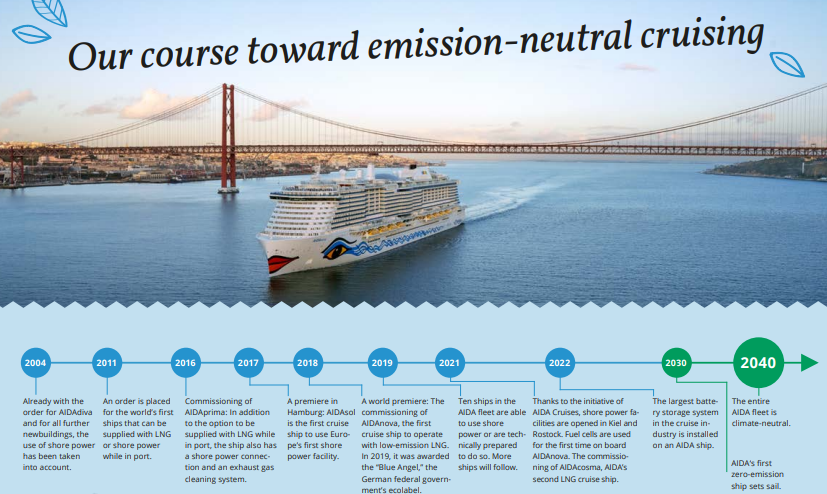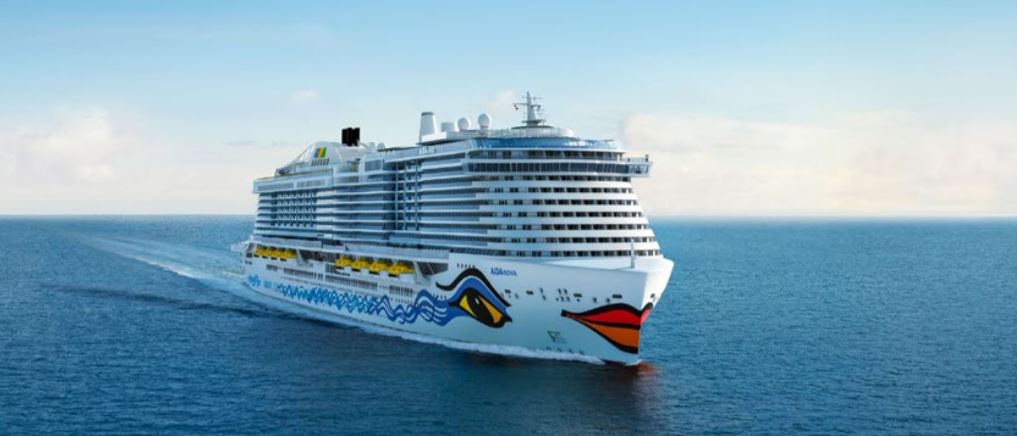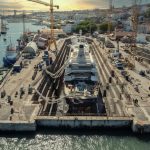German cruise line AIDA Cruises, part of Carnival Corporation, wants its fleet to be zero-emission by 2040, ten years ahead of the climate targets set by the International Maritime Organization (IMO).
The company is therefore making an active contribution to achieving the Paris climate targets and the European Green Deal.
Together with research, science and industry partners, AIDA Cruises is developing innovative solutions and using technologies with the aim of putting the first zero-emission ship into service as early as 2030.
With its Green Cruising Strategy, the company is demonstrating how it has been addressing the global challenges of climate change.

Back in 2004, with the order for AIDAdiva and for all further newbuildings, the use of shore power has been taken into account. In 2011, the company placed an order for the world’s first ships that can be supplied with low-emission liquefied natural gas (LNG) or shore power while in port.
Furthermore, in 2016, AIDA Cruises commissioned AIDAprima, the ship that can be supplied with LNG while in port while also having a shore power connection and an exhaust gas cleaning system. A year later, AIDA Cruises’ AIDAsol debuted as the first cruise ship to use Europe’s first shore power facility.
In 2018, AIDAnova, the first cruise ship running on low-emission LNG was commissioned. The use of LNG represents a bridging technology for AIDA Cruises. Together with various partners from industry and science, the company has been working on solutions for CO2-free production of liquefied natural gas.
By 2019, ten ships in the AIDA fleet were able to use shore power or are technically prepared to do so.
In 2021, shore power facilities were opened in Kiel and Rostock.
What is more, fuel cells were used for the first time onboard AIDAnova in 2021.
In July 2021, AIDAcosma, AIDA’s second LNG cruise ship, was completed and floated out at German shipyard Meyer Werft.
Finally, 2022 will see the largest battery storage system in the cruise industry installed on an AIDA ship.
As part of its Green Cruising strategy, AIDA Cruises is not only investing in advanced environmental technology for its newbuilds but is also working hard to find technical solutions for the ships in its existing fleet.
For example, the question is whether it will be possible to retrofit such efficient fuel cells on a ship in the near future that could supply a large part of the energy requirements, e.g. for hotel operations. Or how waste can be recycled as valuable materials for onboard energy generation, etc.
The careful use of resources is another elementary pillar of AIDA Cruises’ commitment to sustainability. The goal is, for example, to reduce food waste per person on board by 30 percent by the end of 2022 compared to 2019. The number of single-use plastic items has already been reduced by 50 percent to date compared to 2018. By the end of 2022, AIDA already intends a saving of 75 percent compared to 2018.
Source: Offshore Energy






